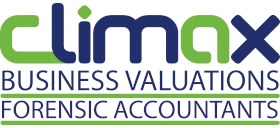I’ve made a profit but where’s the cash?
This is a common question that I get asked regularly from business owners across all industries. Luckily the answer is really easy if you know what you’re looking for. But sadly I often get asked this question after the business owner’s existing accountant has failed to give them a straight answer and it’s almost too late. The truth is you don’t need to be an accountant to work it out anyway, so power to the people I say. The secret is that most of the things that really affect your cash flow are not shown on your profit and loss statement at all but are shown on your balance sheet. Once you understand how it all fits together you can finally control the cash flow beast once and for all. Let me show you how to understand and improve the cash flow for any business.
To understand cash flow you need to understand the working capital cycle. A simple example: A manufacturer has done his research and found out that he can make a bunch of widgets for $1,000,000 and sell them for $3,000,000. Sounds like a no brainer right? $2,000,000 profit! Today he purchases $700,000 of raw materials taking a discount for paying COD and over the next 3 months spends $300,000 in labour and other costs to manufacture the widgets. The sales team then take a further 3 months to find a buyer for the widgets. The buyer then insists on a 2 month payment term, which is not unusual in that industry.
Now let’s look at what happened. Even though there was a $2m profit on the sale, for 8 months the business had negative cash flow of up to $1m just in manufacturing this product line alone. Now picture that this business is currently manufacturing over 10 product lines at once as well as paying for rent and all the usual administration expenses for this type of business. It’s not hard to see why most businesses fail within their first few years. In this scenario the more profit you make the faster you actually go out of business. You’ve heard business gurus say things like “work smarter not harder”, and you’ve probably written it off as a meaningless cliche, but this is a good example of how it applies in the real world? It doesn’t have to be this hard. With some forward planning the cash flow challenges can be mitigated and even used to your advantage.
There are 2 main issues to consider: timing and funding. To fix the timing we could create the following strategy: Negotiate with other suppliers of the raw materials to allow us 3 months to pay for the materials, even if that meant forgoing the early payment discount or changing suppliers. Invest in systems and training to streamline the manufacturing process down to 1.5 months. Have the sales team begin selling the widgets from day 1 and provide extra sales training so they sell all the widgets by the time they are completed. Offer early payment discounts to the purchasers if paid within 1 month from delivery. The whole process is now massively cash flow positive and you have a scalable business model even if the profit is decreased marginally. All we did was to take a strategic view of the situation and think ahead.
The second issue to consider is funding. If after a thorough analysis it’s predicted that there may still be periods of negative cash flow then the estimated amount and timing for the funding must be calculated and the finance arranged before the business actually needs it. Have you ever applied for finance when you needed it yesterday? How did that go?
If you’re wondering where the balance sheet fits into all of this…that’s the easy part. Add together your work in progress, inventory and trade debtors and subtract your trade creditors to see how much cash you’ve got tied up in your working capital cycle. Then look for purchases of new fixed assets and reductions in loans on the balance sheet. Both of these will also reduce your cashflow and have little to do with your profit.
Sadly, far too often business owners fail to undertake enough forward planning to understand the working capital cycle and identify the very real cash flow risks for their business. Most business failures are avoidable if the owners would just take the time to build a business model that works and measure the results against the budget in a meaningful way so that the strategies can be tweaked regularly if required.
Contact me today for a free confidential review of your business’s cash flow. In 15 minutes I can show you where your cash went and how to get it back and keep it.
